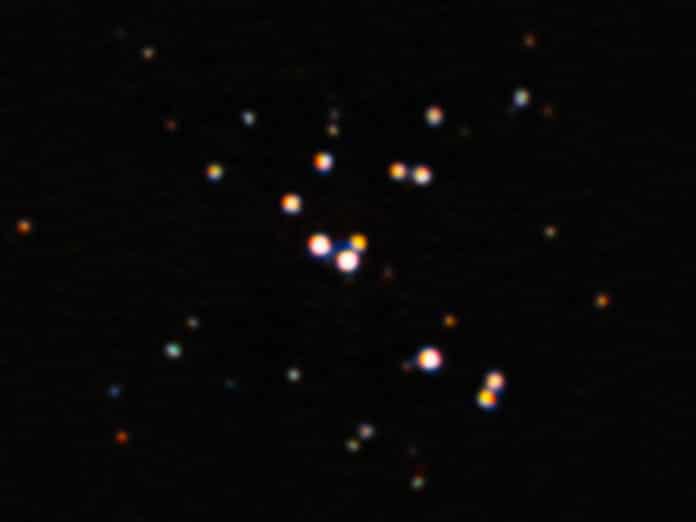The formation of very massive stars is an unsolved problem in astrophysics. Constraining the upper-mass limit and binarity is crucial to understanding their formation.
By harnessing the capabilities of the 8.1-meter Gemini South telescope in Chile, which is part of the International Gemini Observatory operated by NSF’s NOIRLab, astronomers have obtained the sharpest image ever of the star R136a1, the most massive known star in the Universe. This study offers an understanding of the most massive stars. It suggests that they may not be as massive as previously thought.
This colossal star is a member of the R136 star cluster, which lies about 160,000 light-years from Earth in the center of the Tarantula Nebula in the Large Magellanic Cloud, a dwarf companion galaxy of the Milky Way.
According to earlier findings, R136a1 had a mass that ranged from 250 to 320 times that of the Sun. However, the latest Zorro observations suggest that the mass of this big star may only be between 170 and 230 times that of the Sun. R136a1 is still considered to be the most massive star in the Universe despite this decreased estimate.
R136a1 has a mass that varied from 250 to 320 times that of the Sun, according to earlier discoveries. However, the most recent Zorro observations indicate that this massive star may only have a mass of 170 to 230 times that of the Sun. Despite this lower estimate, R136a1 is still regarded as the Universe’s most massive star.
NSF’s NOIRLab astronomer Venu M. Kalari said, “Our results show us that the most massive star we know is not as massive as we had previously thought. This suggests that the upper limit on stellar masses may also be smaller than previously thought.”
The genesis of elements heavier than helium in the Universe is likewise affected by this finding. These substances are produced during pair-instability supernovae, which are the catastrophically explosive deaths of stars with masses greater than 150 times that of the Sun. Pair instability supernovae might be less common than anticipated if R136a1 turns out to be less massive than originally thought. If so, other large stars may also be less massive than previously thought.
Astronomers have previously studied the nearby star cluster home to R136a1 with the NASA/ESA Hubble Space Telescope and several ground-based observatories. Still, none of these telescopes could get images crisp enough to distinguish all the individual stellar components of the cluster.
Ricardo Salinas, a co-author of this paper and the instrument scientist for Zorro, said, “This result shows that given the right conditions, an 8.1-meter telescope pushed to its limits can rival not only the Hubble Space Telescope when it comes to angular resolution but also the James Webb Space Telescope. This observation pushes the boundary of what is considered possible using speckle imaging.”
Kalari said, “We began this work as an experimental observation to see how well Zorro could observe this type of object. While we caution when interpreting our results, our observations indicate that the most massive stars may not be as massive as once thought.”
Journal Reference:
- Venu M. Kalari et al. Resolving the core of R136 in the optical. arXiv:2207.13078v2
